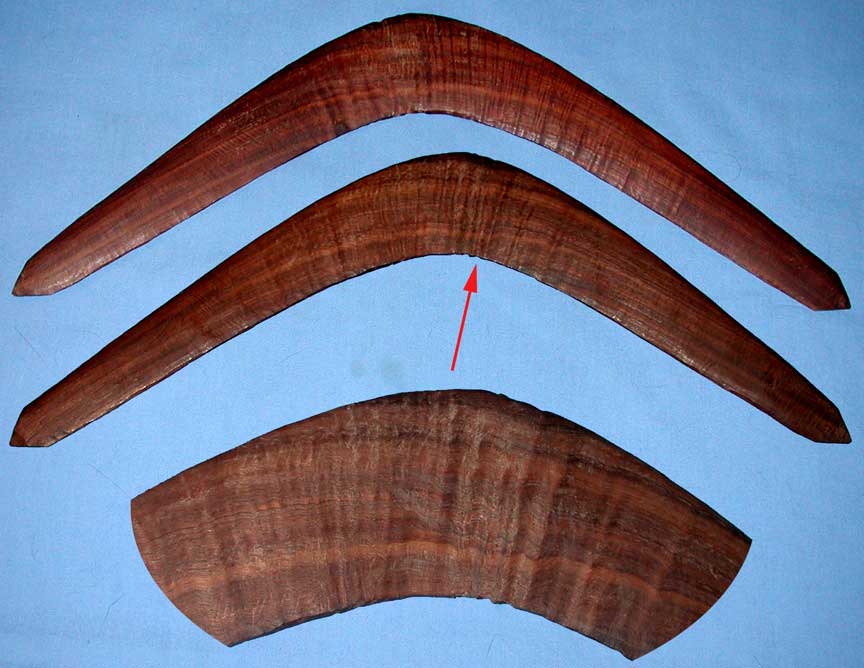Item TB93
This item was sold on 18 May 2007
for $195
Similar artifacts for sale are often found on the Aboriginal
Boomerangs web page.
Historical Pricing information for this item and similar artifacts can be found at: Historical Artifact Prices
|
This medium sized Aboriginal boomerang from Queensland was made out of a gorgeous Black Wattle natural elbow with a highly figured fiddle back or curly grain pattern. The rippled grain pattern exists in all 3 dimensions and can be felt with the fingers, especially at the elbow. The appearance of chips in the vicinity of the elbow is not damage. It is the undulating pattern of the grain at the edge of the boomerang. This is the most beautiful curly grain natural elbow boomerang that I have ever seen. The tips are cut up into points as is typically done on boomerangs from the Queensland region. This boomerang is very dark and was probably made in the late 1800s or early 1900s. It is not known if this boomerang is capable of a full return flight. I would recommend that the owner keep this as a collectable and not throw it. Span = 47 cm Weight = 164 gm Australian Aborigines are well known for making boomerangs. The majority of the Aborigines had the technology to make throwsticks, or non-returning boomerangs. Only a small percentage of the tribal groups knew how to make true returners and most of these came from the eastern coastal regions of Queensland, New South Wales and Victoria. During the past century, the majority of the Aborigines came out of the bush and were somewhat assimilated into the European man's culture. Many Aborigines began making returning style boomerangs to sell to tourists. The earliest ones were well made out of natural timber and with the grain following the curvature of the boomerang. Today, most hardwood boomerang are cut out of a large board and the grain is usually straight and running parallel to a line spanning the tips of the blades. Boomerangs that are made with the grain following the contour of the blades are much stronger and more valuable. In addition, some boomerangs have good airfoiling. The majority do not. Most "tourist boomerangs" have painted upper surfaces that display Australian animals and decorative lines and/or geometric patterns. Most pre-contact returners have no artwork or the artwork is simple and scratched into the surface. It is easy to tell the tourist boomerang from the valuable ethnographic artifact. However, tourist boomerangs that are made properly with the grain running along the contour and with good airfoiling and art work do have good collectable value, especially if they are made by a famous Aboriginal artists, like Bill Onus or Joe Timbery. |

Back to: Collectable Artifacts | Aboriginal Boomerangs | Historical Artifact Prices | Primitive Technology | contact: Ted Bailey